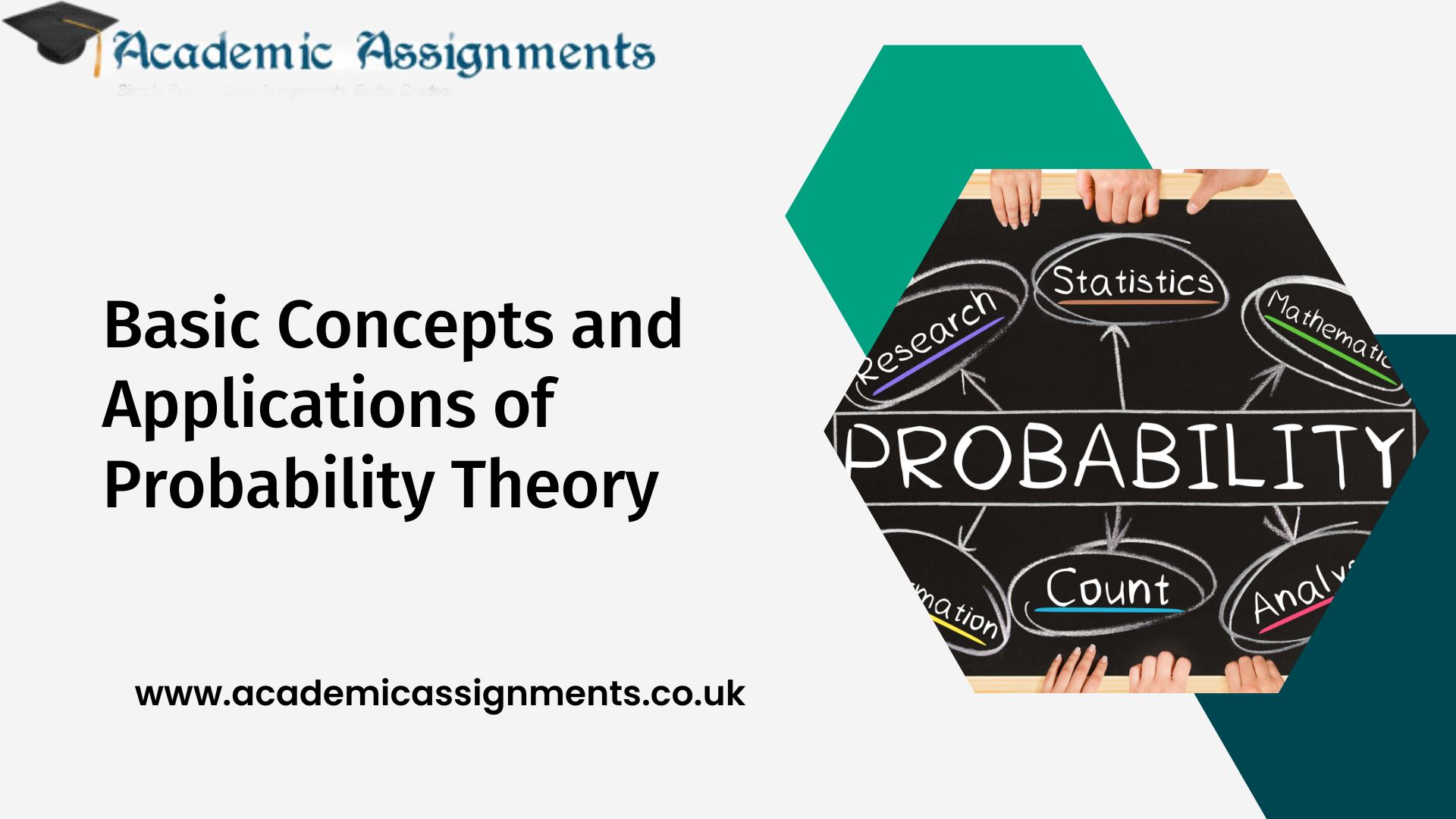Probability Theory: Basic Concepts and Applications
The field of probability theory is an intriguing area of study that holds relevance in numerous domains. Probability theory deals with analysing unpredictable events and their chances of happening. It is a crucial instrument utilized in finance, engineering, medicine, sports, and many other fields where decisions must be made amidst ambiguity. This article explores the elementary concepts of probability theory and its practical applications. To initiate our discussion, we will provide a concise account of the history of this subject and its gradual development. We will then explain the different interpretations of probability and the various types of events and their probabilities. Afterwards, we will delve into the techniques for computing probabilities and the various probability distributions frequently employed in probability theory. Ultimately, we will examine several real-life scenarios where probability theory finds its practical application. Upon completing this article, you will possess a strong comprehension of the fundamental principles of probability theory and its usefulness in resolving issues and taking informed actions.
Concepts Of Probability Theory
Defining Probability and Its Interpretations
Probability is a gauge of the chances of an event taking place. The classical interpretation of probability holds that all outcomes of an event have equal chances of occurring. On the other hand, the frequentist interpretation views probability as the relative frequency of an event occurring over the long run. The subjective interpretation of probability is based on personal beliefs and judgments.
Types of Events and Their Probabilities
Events can be categorized into diverse classifications contingent on their associations with other events. In this section, we will converse the ensuing kinds of events and their probabilities:
- Independent Events: If one event’s occurrence does not impact the likelihood of the other event transpiring, then the two events are considered independent.
- Dependent Events: If the occurrence of another event influences the probability of one event taking place, then the two events are considered dependent.
- Mutually Exclusive Events: If two events are mutually exclusive, it signifies that both events cannot take place at the same time.
- Complementary Events: These are two events that collectively cover every plausible outcome.
Methods of Calculating Probabilities
There are different methods of calculating probabilities based on the type of event and the given information. In this section, we will discuss the following methods:
- Multiplication Rule: This rule estimates the likelihood of multiple independent events transpiring collectively.
- Addition Rule: This rule calculates the probability of two or more mutually exclusive events occurring.
- Bayes’ Theorem: This theorem calculates the probability of an event occurring given prior knowledge of related events.
Probability Distributions
Probability distributions are mathematical functions that explicate the probabilities of assorted consequences in a random occurrence. In this section, we will converse some of the most prevalent distributions utilized in probability theory, comprising:
- Normal Distribution: This refers to an uninterrupted probability distribution that characterizes the arrangement of numerous independent and indistinguishable random variables.
- Binomial Distribution: This refers to a probability distribution that is discreet in nature and outlines the count of triumphs within a set quantity of autonomous and equivalent attempts.
- Poisson Distribution: One of the probability distributions used is the Poisson distribution which is a discrete distribution that characterizes the number of occurrences happening in a set interval of space or time.
Applications of Probability Theory
Probability theory has a wide range of applications in different fields. In this segment, we will deliberate on several practical instances of utilising probability theory to resolve predicaments and make decisions.
- Finance: Probability theory is utilised in finance to estimate the risk and return of investments. Investors use probability distributions to analyze the potential outcomes of their investments and make informed decisions. Financial institutions use probability models to price various financial instruments such as options, futures, and swaps.
- Engineering: Probability theory is used in engineering to analyze and design systems with uncertain inputs and outputs. Engineers use probability distributions to model the behaviour of systems and predict their performance. For example, in civil engineering, probability theory is used to analyze the risk of failure of structures and to design structures that can withstand uncertain loads.
- Medicine: Probability theory is used in medicine to estimate the efficacy and safety of drugs and treatments. Medical researchers use probability models to design clinical trials and analyze the results. Physicians use probability theory to make diagnostic decisions and estimate the probability of different health outcomes.
- Sports: Probability theory is used in sports to evaluate the performance of athletes and teams. Sports analysts use probability models to predict the outcomes of games and tournaments. Coaches use probability theory to make decisions on strategies and tactics.
- Weather Forecasting: Probability theory is used in weather forecasting to estimate the likelihood of different weather conditions. Meteorologists use probability models to predict the probability of rain, snow, or other weather events. Individuals and businesses use these forecasts to plan their activities and operations.
- Risk Management: Probability theory is used in risk management to assess and manage different types of risks. Insurance companies use probability models to price insurance policies and estimate the probability of different types of claims. Corporations employ probability theory to scrutinize and regulate a range of risks, encompassing financial, operational, and market risks.
Conclusion
The branch of mathematics that focuses on the exploration of randomness and uncertainty is known as probability theory. It provides a framework for analyzing and quantifying different events’ likelihood. Throughout this write-up, we have scrutinized the rudimentary concepts of probability theory, comprising the explication of probability and its interpretations, the diverse kinds of events and their probabilities, the approaches for computing probabilities, probability distributions, and the usage of probability theory in an array of fields. Probability theory has various practical applications in areas such as finance, engineering, medicine, sports, weather forecasting, and risk management. These applications are multifarious and potent, supplying a structure for taking calculated decisions despite the presence of uncertainties.
Author Bio: Mark Edmonds is a proficient statistician and scholarly author who zealously assists students in accomplishing their academic aspirations. Having over a decade of expertise in statistics, Mark has extensive knowledge of the fundamental principles and pragmatic uses of probability theory. He is currently working as a management assignment help expert at Academic Assignments, providing the best quality statistics assignment help to students. Mark is dedicated to delivering prompt and superior academic support to students, guaranteeing their accomplishment of academic goals and triumph in their professional endeavours.

 Blogs
Blogs





